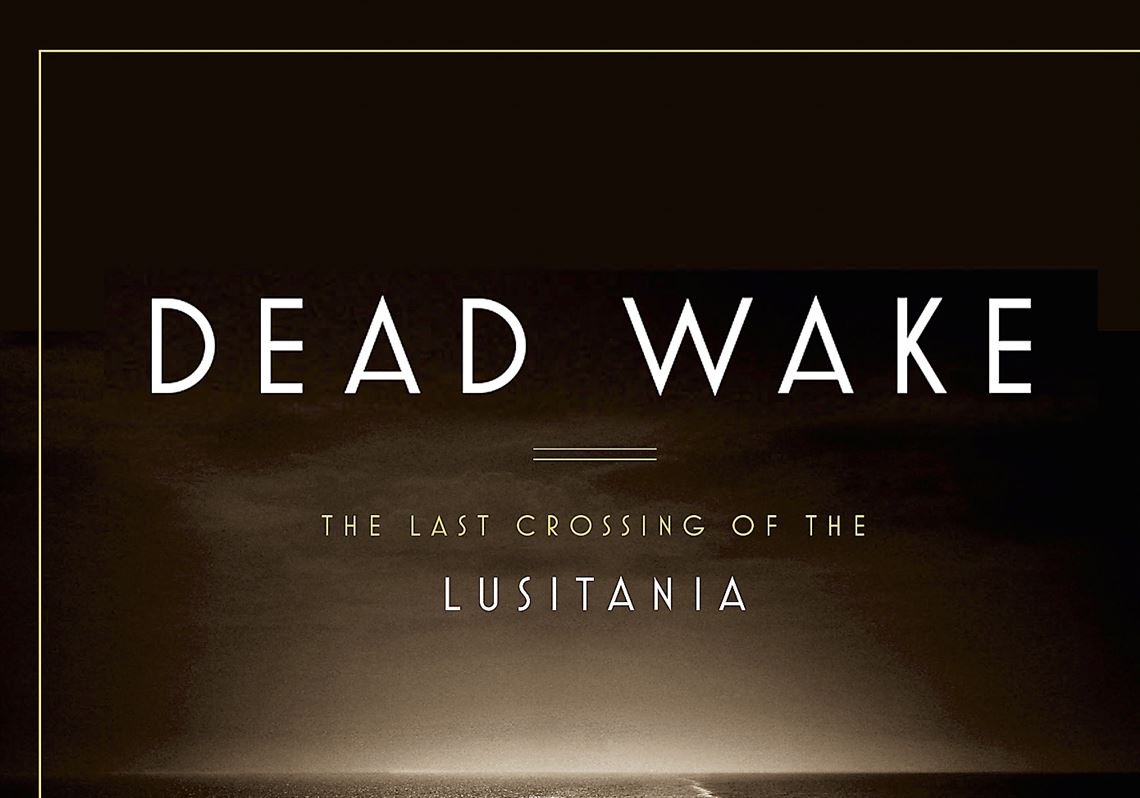They had been warned.
With war raging across the ocean, an eclectic group of passengers gathered in New York City in May 1915 for a trans-Atlantic voyage aboard the great Lusitania, a majestic, swift and towering vessel that catered to the pampered classes and was the pride of the safety-conscious Cunard shipping line.
Everyone knew the risks. En route to Liverpool, the Lusitania would be passing through a German-declared war zone off the coast of Ireland during an era in which submarine warfare was ascendant. The German embassy in Washington, D.C., had gone so far as to place an ad on the shipping pages of New York’s newspapers that leveled a veiled yet unmistakable threat at the Lusitania.
Crown ($28).
Many shrugged off the peril. Built sturdily — a “passenger liner, but with the hull of a battleship” — the Lusitania also found protection in the hubris of man. Its experienced and unflappable captain, William Thomas Turner, was skeptical that any German submarine could match his vessel’s speed. His bosses felt the same.
“The truth is that the Lusitania is the safest boat on the sea,” the company said. “She is too fast for any submarine. No German war vessel can get her or near her.”
A U-boat’s single torpedo sank her in 18 minutes.
In the hands of a lesser craftsman, the fascinating story of the last crossing of the Lusitania might risk being bogged down by dull character portraits, painstaking technical analyses of submarine tactics or the minutiae of WWI-era global politics.
Not so with Erik Larson. In “Dead Wake: The Last Crossing of the Lusitania,” the author’s latest masterful fusion of history and storytelling, the former Wall Street Journal reporter effortlessly re-creates the collision course taken by Capt. Turner and the man who would destroy his ship, Kptlt. Walther Schwieger, commander of Unterseeboot-20.
With a book release cleverly pegged to two months shy of the centennial of the ship’s sinking, Mr. Larson and his star power don’t have to rely on Leonardo DiCaprio and Kate Winslet to bring center stage the gripping story of the lesser-publicized of the 20th century’s major maritime disasters.
“Dead Wake” deftly weaves together a number of Mr. Larson’s fascinations from previous books — technology, weaponry, wartime, Germany, weather and period pieces.
Engaging in a favored chronological newspaper storytelling technique called a “tick tock” that exploits Mr. Larson’s print journalism roots, the author invites readers on a journey of parallel tracks. He escorts us as we join the Lusitania’s passengers readying for their voyage, departing from the New York wharves, sharing the quotidian rhythms of life aboard the ship, fretting or not fretting about the German warning and, ultimately, dying or surviving catastrophe.
At the same time, Mr. Larson opens up the cramped quarters of a German submarine, illuminating the tensions of a dangerous life beneath the water and the zeal of the men commanding that country’s undersea arsenal.
Thankfully for his readers, Mr. Larson not only has a keen eye for delicious detail and an endless appetite for research (as evidenced by his always enjoyable footnotes), he has a lot to work with.
Set against a backdrop of England and Germany battling for bragging rights on the high seas, Mr. Larson’s book is inhabited by the larger-than-life characters of Woodrow Wilson and Winston Churchill, spiritualists and ship captains, warmongers and, of course two impressive vessels, each with its own outsized personality.
As Mr. Turner and Kptlt. Schwieger barrel toward confrontation, in London a secret operation known as “Room 40” deciphers coded German messages — ones that, had they been acted upon, could have saved the Lusitania and its 1,198 hapless souls. And in Washington, the newly widowed isolationist President Wilson grapples with his country’s place in an increasingly fractured Western Hemisphere, even as he woos a new love.
As has become his specialty, Mr. Larson wrestles these disparate narratives into a unified, coherent story and so creates a riveting account of the Lusitania’s ending and the beginnings of the U.S.’s involvement in the war.
At the same time, Mr. Larson tries to answer the nagging journalistic questions that inevitably arise from such a focused examination about what went wrong. “Indeed, these are the great lingering questions of the Lusitania affair,” Mr. Larson writes, “why was the ship left on its own, with a proven killer of men and ships dead ahead in its path?”
What if the Lusitania had not spent extra time taking on passengers from another ship? What if the heavy fog that day had lasted just a bit longer? What if the U-boat’s torpedo had struck a different part of the vessel?
“In the end,” Mr. Larson concludes, “Schwieger’s attack on the Lusitania succeeded because of a chance confluence of forces. Even the tiniest alteration in a single vector could have saved the ship.”
Jonathan Silver: jsilver@post-gazette.com or 412-263-1962.
First Published: March 8, 2015, 5:00 a.m.

















